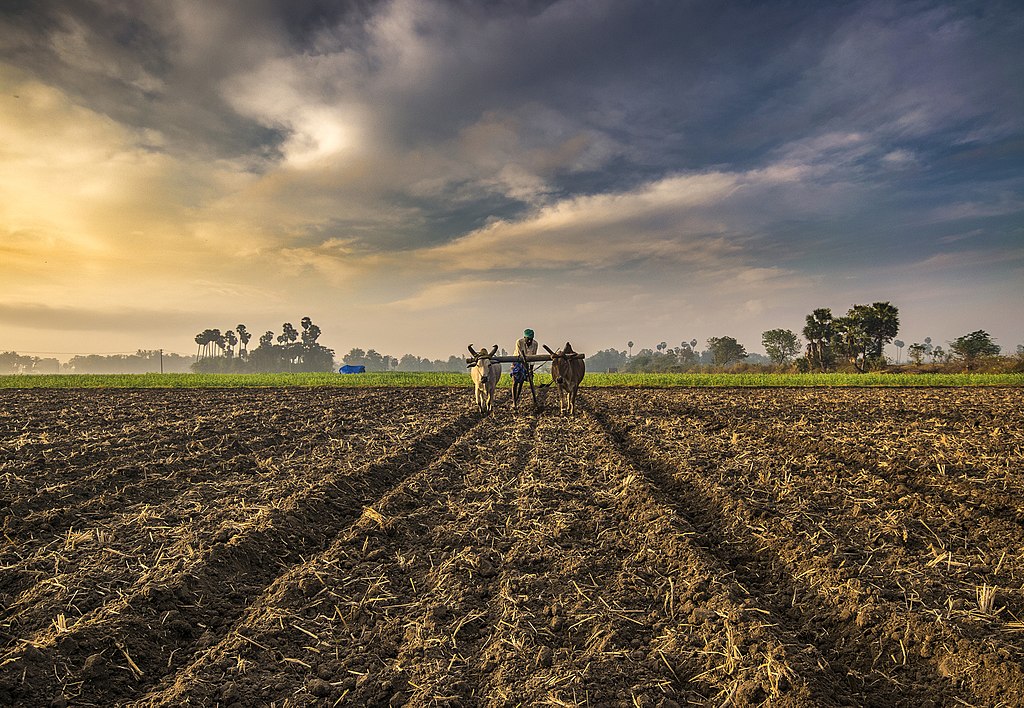This is the final article of a three-part series on sustainable consumption and food security in India, supported by Pristine Organics. Click here to read part one and part two.
Our food system is in shambles. As laid out in the first two articles of this series, there seems to be an unending list of problems with regards to food security, environmental sustainability, and food justice with no end in sight. So, are we doomed? Where do we go from here? How can we envision inclusive and specifically Indian solutions for a sustainable food system?
To unearth solutions, we can begin by exploring the indigenous or traditional culinary and farming practices still retained by communities in many parts of the country. Many such communities have been unable to escape the state-led model of neo-liberal development [1], growingly forced into the unsustainable food supply chain that plagues India’s current food system.
That being said, while keeping the risk of romanticising imperfect traditional agrarian livelihoods in mind, we can still learn a lot from communities who live sustainably and in rhythm with their local ecology.
Now, bridging the knowledge gap between communities who rely on traditional food systems and a distanced urban population is not easy. But, people who work in close connections with such groups—whether they are scholars, activists, or social workers—may be of help. To offer new ways of imagining food sustainability, we hear the voices of three women who have worked with distinct communities that still practice largely traditional consumption methods across India.
How are some communities more sustainable than others?
Let us first take a journey to the rural areas of Nagaland, where our first narrative comes from. After COVID-19 wracked Nagaland, rural communities in Nagaland barely suffered due to the loss of imports from Assam—the same cannot be said of urban-dwellers in the state’s capital of Kohima. Instead, they continued to rely on their local produce and brought them to Kohima to sell. Even amidst the pandemic, farmers in rural Nagaland were not only sustaining their food traditions, but building up their own rural economy as well.
A food value addition training was held with 14 volunteers from the community on Millet Pan Cake, Pumpkin Pakora and Millet Coconut Sweet by NEN staff members @biodiversity festival at Thetsumi Phek District #Nagaland on 15th Dec#Celebrating Resilience of #Biodiverse Community” pic.twitter.com/7NNAudeCNE
— North East Network (@NEN_India) December 17, 2020
How did they do it? To find out, I spoke to Wekoweu (Akole) Tsuhah to find out. Tsuhah is the Nagaland state director of the NGO North East Network (NEN), which works on themes of gender-based discrimination and violence against women, governance, natural resource management and sustainable livelihoods. It has made efforts to collectivise women farmers and help them sustain indigenous systems and livelihoods.
There is a slow shift towards cash crop monocultures in Nagaland. However, farmers in Phek district where Chizami is located (and where the NEN operates from) still rely on the traditional jhum cultivation—also called shifting cultivation— backyard organic gardening, and terrace rice cultivation, mainly for subsistence. As Ms. Tsuhah states, “Farmers in Chizami focus on having enough for themselves and if there is excess, it is collectivized and sent to the market.”
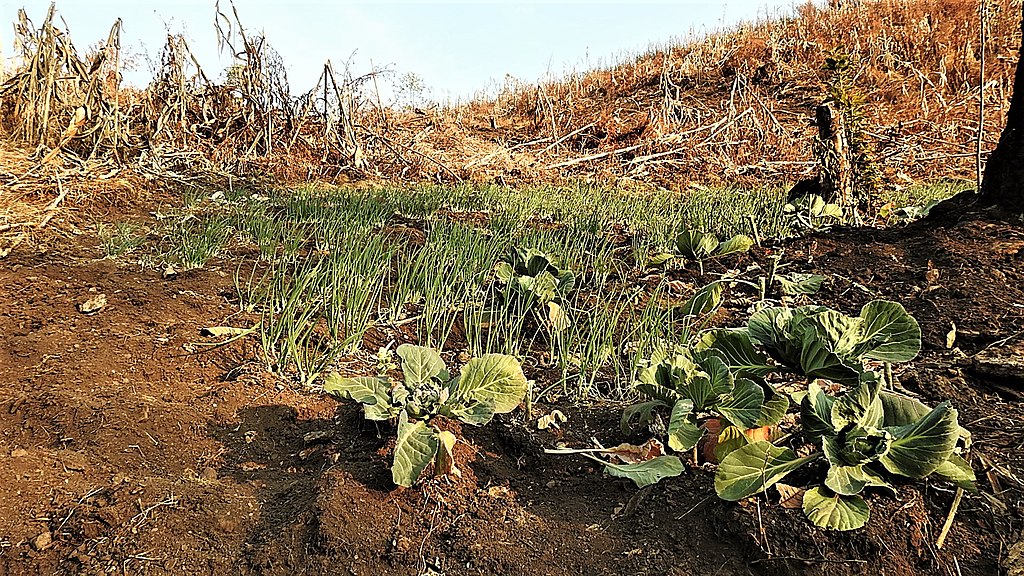
As a result, not only are the farmers self-sufficient, but they are also highly attuned to their ecology. They grow a mixture of crops such as millets, rice, and leguminous and leafy vegetables that match traditional cuisines and are sown according to seasonal calendars. As Chizami residents rely on traditional farming methods, everything is organic which allows them to eat a diverse, healthy, and environmentally sustainable diet.
Drawing out the differences between the traditional food system kept alive in Chizami and the modern agricultural system today, Tsuhah says, “There is definitely a big gap. In traditional systems, everyone owns resources—there is shared access to knowledge, seeds, land, and resources. In India’s current system, a few [stakeholders] own these factors and thus control the means of production, which are often exploitative.”
You May Also Like: Dr. K.S. Chalam on the Political Economy of Caste in India
And so, such agricultural models better succeed at integrating social justice and food sustainability compared to centralised models of agriculture. Tsuhah adds, “Traditional systems also address issues of equity and favour a culture of sharing resources, allowing everyone access to what they need to be self-sufficient. So we need social solidarity for sustainable agriculture. We must build upon community values and sustain traditional farming practices.”
To meet these ends though, Tsuhah highlights that the state must be involved too. The problem of unsustainability seeps into traditional systems when the state prioritizes unsustainable food systems in Nagaland, such as funding and supporting large farms, plantations (such as for coffee and rubber) and horticultural crops, instead of supporting diversity-based sustainable agriculture which prioritises food crops.
Agriculture Practice @ Nagaland, North East India. Traditional agricultural practices in Nagaland, North East India. With over 70% of Nagaland population depending on Agriculture with main crops being pulses, maize, Millets, and Rice. pic.twitter.com/8MgrxdwEOc
— ilovenortheastindia (@lnortheastindia) February 23, 2020
“Millet cultivation is dwindling in Nagaland,” says Tsuhah. This in spite of the fact that it “supports a traditional taste palette and follows ecological principles [by relying on minimal chemical inputs that might harm the soil, water, and air on the farm]. The loss of millets is not only isolated but disturbs the whole system of biodiverse agriculture that was produced. But there is simply no support for people practising this type of agriculture. The state needs to recognize their worth and support it as well.”
Are fishers ‘threats’ to marine conservation?
Moving from the Northeastern hills, we shift to the coasts. Here small fishermen have practised sustainable fishing methods for years, much before the word was introduced to them under marine conservation discourses.
However, in spite of this, “Fishers are often seen as the biggest threats when discussing conservation from the perspective of marine biology. Fishing is implicated in destroying marine ecosystems and killing many species,” says Divya Karnad. She is an Assistant Professor of Environmental Studies at Ashoka University, the recipient of the Future of Nature 2019 Award, and the cofounder of InSeason Fish.
However, when researching with fishers along the coasts of Maharashtra, Karnad found that small-scale fishers found it futile to be asked by researchers, “What do you do about sustainability? How are you going to do something about it?” After all, they were already actively thinking about these questions in their traditional fishing practices. “Fishers are very interested in the long term survival of the fisheries because they see their future in it and some see their children’s futures in it.”
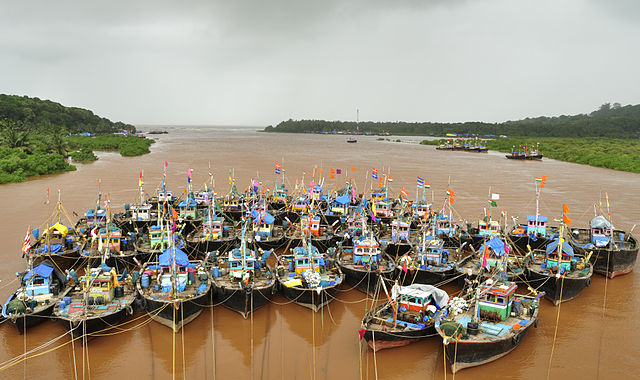
How have small-scale fishers been able to fish sustainably for years? Much like Tsuhah’s experiences in Nagaland, small-scale collective discussions over how to produce in an area are critical. Karnad notes that “These fishers came together and formed collectives to discuss how they could fish more sustainably. They were using different methods such as avoiding certain types of gear which they thought were very harmful, or temporarily closing off certain areas where they thought fish were breeding to protect their populations.”
Again, such lines of thinking are directly at odds with the disconnect between production and consumption witnessed in centralised fishing policies or companies. “The way small-scale fishers think about sustaining the ecosystem is very much integrated with sustaining more egalitarian relations within their own communities,” says Karnad. “They tend to avoid any type of fishing gear that could result in huge capital accumulation just for a single person. Take the example of Tamil Nadu, where collectives have come up with ways to buy and use nets in the fishery such that no one person profits from their catches. In that way, they are coming up with ways to maintain more egalitarian relationships in the community.”
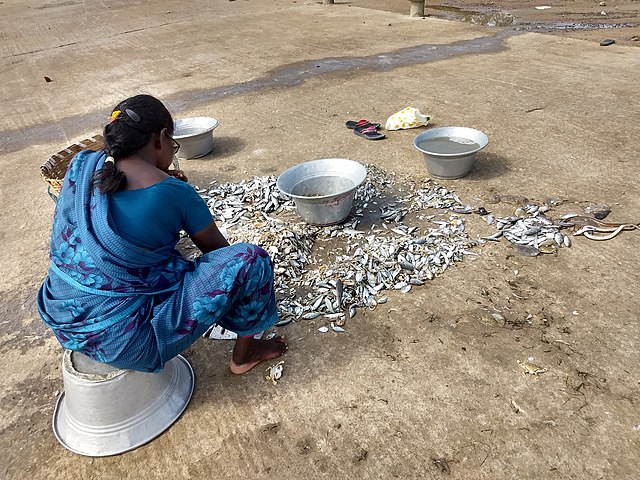
Karnad points out that small-scale fishers often lose out on catching these high-value species when using sustainable techniques. They simultaneously compete with large-scale fishers who opt for mechanised boats and often rely on rapacious and unsustainable harvesting practices, paying low wages to their labourers. Traditional fishing communities demand that the government provide minimum support prices without which they are currently subject to variable, fluctuating prices for their catch comprising their income security.
You May Also Like: The Shore Scene
“So, this made me think about who is really responsible for a sustainable fishery [that conserves different species]” says Karnad. “Is it only the [small-scale and large-scale] fishers, or is it everyone down the supply chain? This led to me starting InSeason Fish.”
Karnad and her team found that most people living in coastal cities like Chennai or Mumbai did not know where their fish supply was coming from. Through InSeason Fish, Karnad and her team aim to create more transparent supply chains, and direct consumers to eat locally and in season. If people can diversify what they are eating, this will take a lot of pressure off of the popular species of fish, which are generally fished unsustainably to the detriment of small-scale fishers and the oceans.
“To a certain extent,” says Karnad, “these practices will also have these downstream effects on the rest of the supply chain. They’ll provide market security signals: it’s not only a few varieties of fish that are in demand.”
Our January recommendations are here! Local names are in the 2nd image. Remember to #askforinseasonfish & look up https://t.co/960oDTulck for more options. pic.twitter.com/KEA0UxYGO1
— InSeason Fish (@InSeasonFish) January 3, 2021
The Fight for Forest Rights
Our final destination is Andhra Pradesh’s Srikakulam district, home to the Savara tribe. The Savara continue to practice jhum cultivation as well—called podu in the region—and have set up complex food farming systems on hilltops, and on the slopes. Here, communities own three or four plots of land where they grow mixed varieties of food, shifting from one to another plot every few years. In about twelve years, they cycle through the other three plots and return back to the plot they started out on.
As they traditionally live in forested areas, the Savara’s system of farming allows forests to recuperate, such that people can cultivate their food according to the season. A mixture of millets, dry-land rice, pulses, oilseeds, and some vegetables are popular staples. Beyond these food crops, there is also a symbiotic relationship with uncultivated foods and herbs that grow when shifting cultivation is practised as crops provide nutrients through their root system.
“Every community has their seasonal calendar; when to start sowing; what will be the combination of crops; what mixture of seeds? The system is highly complex yet so simple,” says Dr. Sagari Ramdas, a veterinary scientist and a member of the Food Sovereignty Alliance. The Alliance makes political demands for food sovereignty—such as for control over local seeds and democratic governance of resources from land, water bodies, and forests. The framing of these demands is guided by the traditional knowledge of Adivasi communities and small farmer peasant and pastoralist communities. Dr. Ramdas has also worked as a field veterinarian and researcher on livestock and people’s livelihoods, learning from Adivasi and rural communities in India. Much like the case in Chizami, “The Savara’s food supply chain works in ‘concentric circles’,” says Dr. Ramdas. First, the farmers ensure there is enough produce for their families and community; then, the surrounding villages. If they have any excess produce, they might collectivise to sell to external markets.
In terms of whether such cultivation systems enable social justice or not, Dr. Ramdas shares that “With shifting cultivation, what is evident is that there is a far more equal sharing of labour and decision making between the genders in these indigenous communities.” There is also a localised decision-making system, where villages and communities collectively decide what should be planted harvested in the cleared plots.
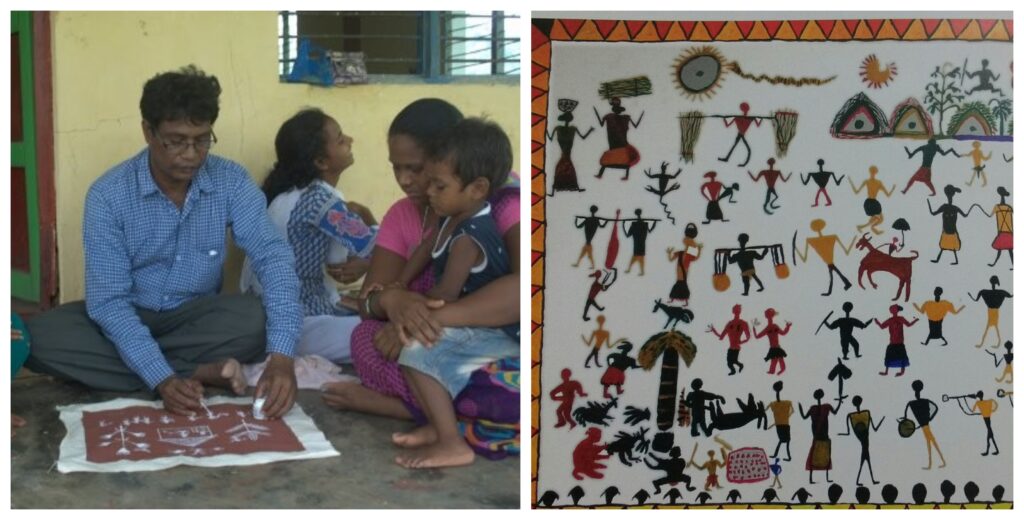
However, with the scaling of settled agriculture and mono-cropping for commercial purposes, ecologies lose out on this diversity. In particular, Adivasis in Telangana have faced the repercussions of state development policies that aim to push them away from shifting cultivation as it is seen as an “unsustainable and non-developed” practice. This results in protracted struggles to maintain sovereignty over their land, resources, and what they grow and eat.
Laws like the Compensatory Afforestation Fund Bill also take away the control that Adivasis have over their land. Dr. Ramdas highlights that “Constant conflicts arise as the Forest Department comes in to grow trees on land which was previously used for growing food—plantations of cashew, citrus fruit, pineapples, and less often, of rubber and biodiesel.” Through such legal mechanisms, state agencies are able to raise a lot of money to build plantations, even on lands that have been secured by communities under the Forest Rights Act.
Reportedly, they created terror in the village and threatened the villagers with dire consequences like foisting of criminal cases if the latter obstructed them from planting saplings on the podu cultivation lands. People resisted this by sitting down @nit_set @LandConflicts pic.twitter.com/XIXzg9sk46
— Forest Rights (@ForestRightsAct) July 30, 2020
These larger shifts force a switch from subsistence-based farming to an export, commodity-oriented model instead. Says Dr. Ramdas, “that this is happening is ridiculous because the subsistence farmer has always been the most food secure, both in terms of the home-food sufficiency and the sovereignty of that food. You have control over what you will eat, grow, and how you will grow it; therefore you can retain the seed and your knowledge as well.”
Dr. Ramdas drives home the problem and highlights that although there is promise of higher monetary profits from cash crops grown on plantations, “many Adivasis can no longer afford to eat the fresh and organic produce they once grew. Instead, they rely on the meagre rations of cheap, refined rice they receive from the Public Distribution System.”
Where do we go from here?
Listening to these narratives of communities from different parts of India show us that our food systems don’t have to be unsustainable. We can have food security, ecologically attuned agriculture, and more equitable social relations. Moving forward, we must listen to the success stories of traditional communities and learn from the challenges they face as well.
We could start by making the effort to know what is on our plates and where they come from by sourcing our food from local producers or trying to eat more seasonably. Then comes the bigger task, demanding the state to start rewarding an ecologically sustainable and socially just food system.
About the Sponsor: Pristine Organics was founded to bridge the gap in nutrition and reconnect us to foods that sustain and nourish us. Our products come from ecologically mindful farming and processing methods that are healthier, both for us and our planet.
Click here for FAQs on how we run sponsored content at The Bastion.
Featured image courtesy of Ramkumar Radhakrishnan (CC0 1.0).
[1] Rastogi, Rahul, and Mohan J. Dutta. “Neoliberalism, Agriculture and Farmer Stories: Voices of Farmers from the Margins of India.” Journal of Creative Communications, vol. 10, no. 2, July 2015, pp. 128–140


